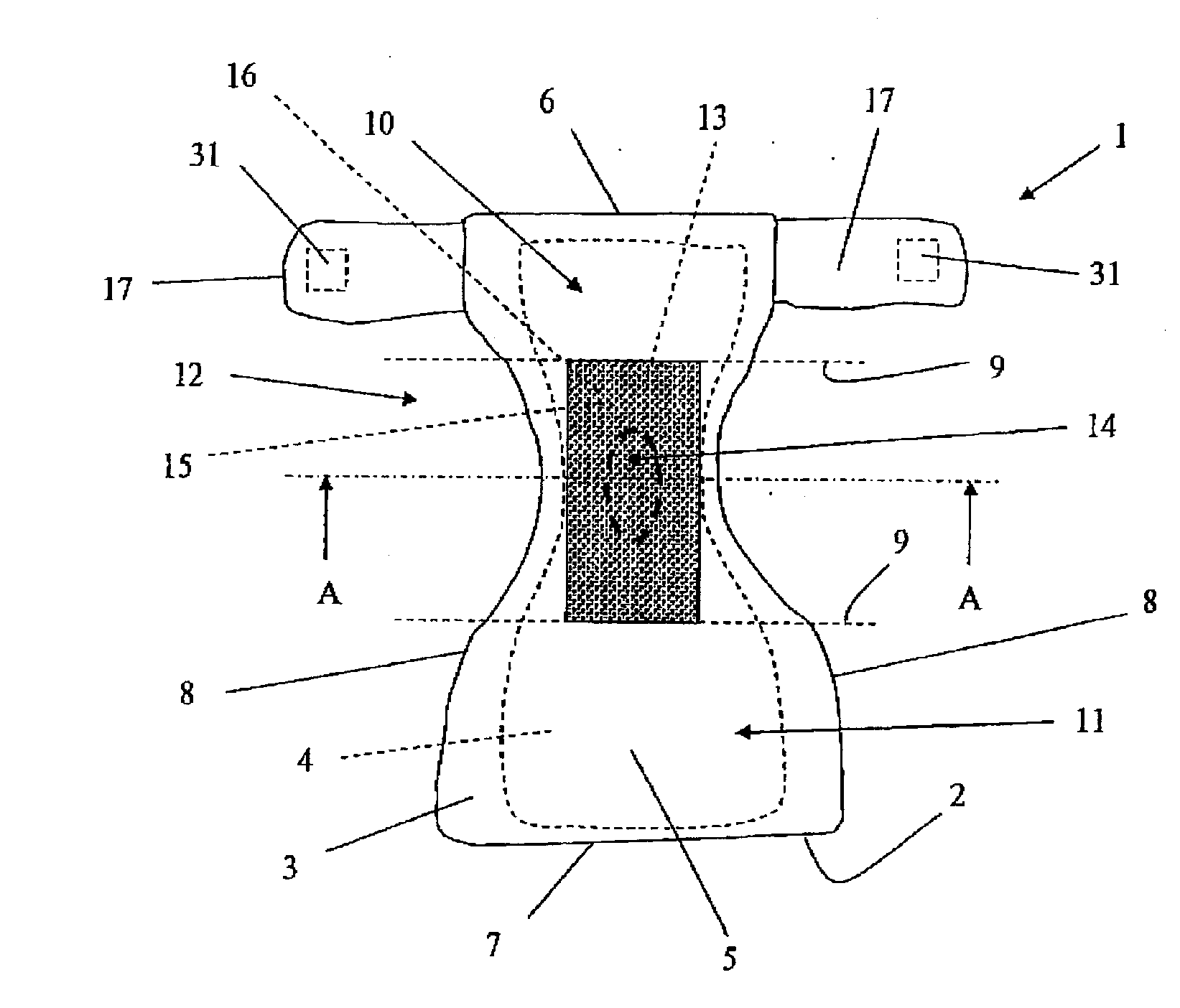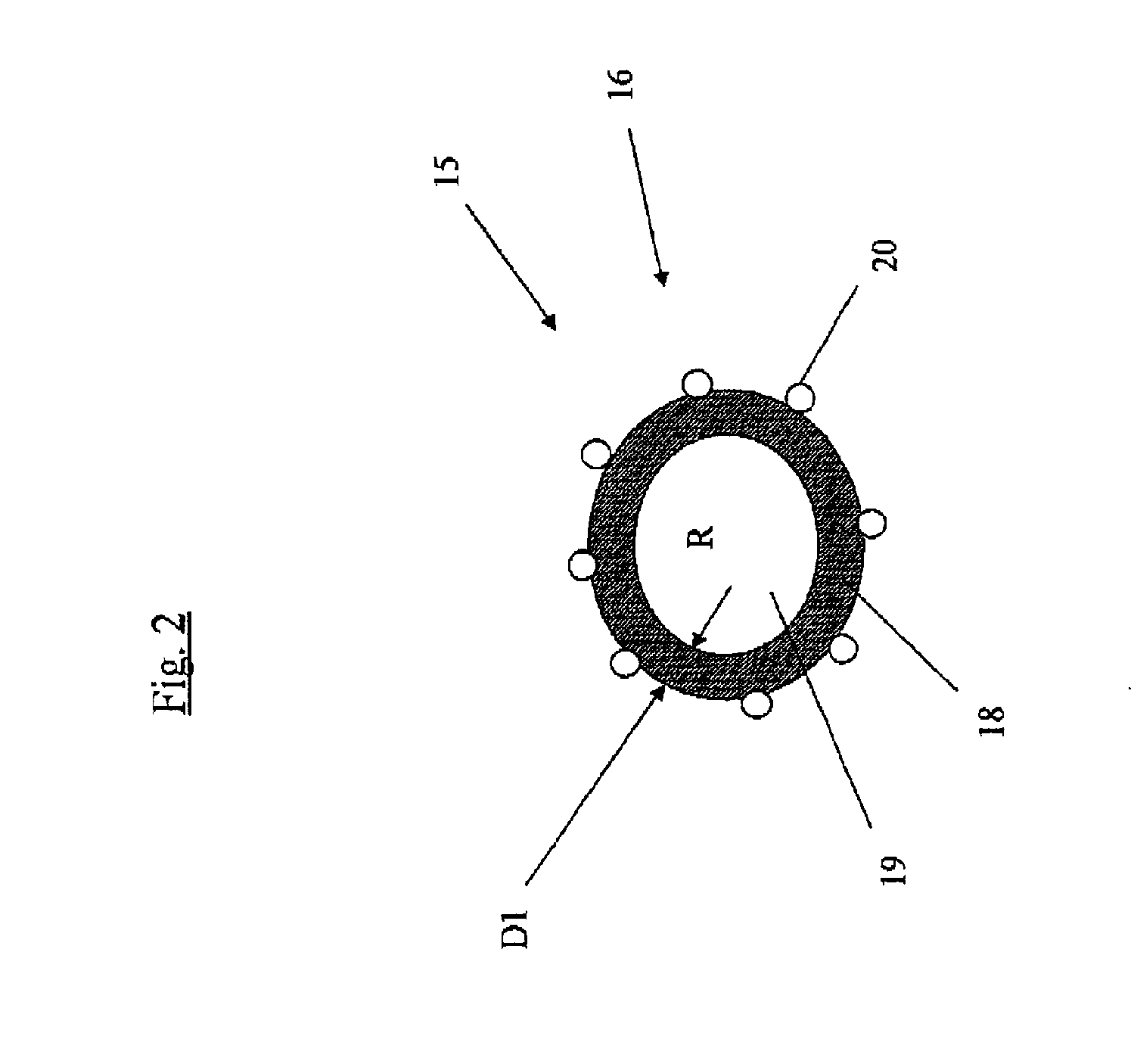Absorbent Article With Indicator Device
- Summary
- Abstract
- Description
- Claims
- Application Information
AI Technical Summary
Benefits of technology
Problems solved by technology
Method used
Image
Examples
first embodiment
[0047]FIG. 2 schematically shows a section of an indicator 15 in an indicator device 13 in accordance with the invention. FIG. 2 shows the indicator device as a microcapsule 16 which has an oval cross section. The microcapsule 16 can thus be essentially cylindrical, spherical or ovoid. The microcapsule 16 comprises a first envelope layer 18 and a first indicator substance 19, with the indicator substance 19 in FIG. 2 being marked by the letter “R”. The first envelope layer 18 has a certain thickness D1 and comprises one of the materials which were enumerated previously. FIG. 2 shows that absorbent particles 20 are attached to the envelope layer 18. The absorbent particles 20 are intended to absorb liquid, with this being meant to afford the advantage of the envelope layer 18 being rapidly, and after that continuously, exposed to moisture or liquid, with this in turn giving rise to the desired time-measurement. The absorbent particles 20 are not necessary but simply constitute one em...
second embodiment
[0056]FIG. 6 schematically shows a section of a microcapsule 24 in an indicator device 13 in accordance with the invention. The microcapsule 24 possesses an essentially circular cross section, which means that the microcapsule 24 can be spherical, ovoid or cylindrical. Other spatial geometries can also occur, for example cubic microcapsules. In this present case, the microcapsule 24 contains two indicators 25, 28 in a layered structure. The second indicator 28 comprises a core of a second indicator substance 29 (also marked with the letter R) which is coated with a second envelope layer 30. The first indicator 25 comprises a first indicator substance 26 (also marked with the letter G), which is coated on the second envelope layer 30, and a first envelope layer 27 which is coated on the first indicator substance 26.
[0057] At least part of the first envelope layer 27 is entirely dissolved after a first time and then gives a signal by releasing the first indicator substance 26. Subsequ...
PUM
 Login to View More
Login to View More Abstract
Description
Claims
Application Information
 Login to View More
Login to View More - R&D
- Intellectual Property
- Life Sciences
- Materials
- Tech Scout
- Unparalleled Data Quality
- Higher Quality Content
- 60% Fewer Hallucinations
Browse by: Latest US Patents, China's latest patents, Technical Efficacy Thesaurus, Application Domain, Technology Topic, Popular Technical Reports.
© 2025 PatSnap. All rights reserved.Legal|Privacy policy|Modern Slavery Act Transparency Statement|Sitemap|About US| Contact US: help@patsnap.com



